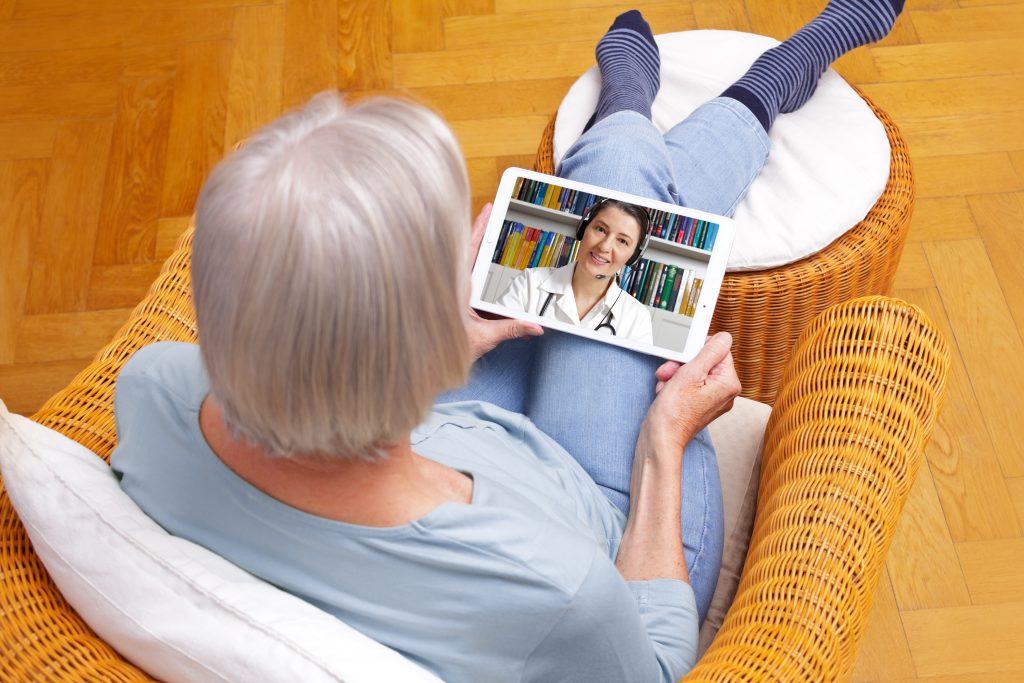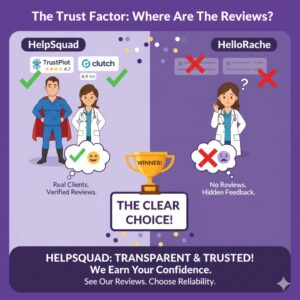How Medical Practices Can Adapt During the COVID-19 Outbreak
22 Apr 2020 By: Michael Kansky
Updated
You’re sick of hearing about COVID-19. We’re sick of writing about it.
And, collectively, we’re all sick of dealing with it.
Sadly, we have no choice but to continue to adjust to the “new normal.” What other option do we have?
The truth is we were all unprepared to handle a shit show of this magnitude.
But, no one was more unprepared than those in the medical field.
Small, private medical practices are in an especially tough position because many lack the resources, revenue, and manpower of larger networks.
For those now scrambling to adjust, here’s how private medical practices can adapt during the COVID-19 outbreak.
Implement Virtual Receptionists
As my father always says, “Proper planning prevents poor performance.” In these uncertain times, it’s wise to have a backup plan in place should staffing become an issue.
The AMA has recommended that all practitioners develop a contingency plan to prepare for operating with a limited staff.
“Depending on cash flow challenges or external factors beyond your control, your practice may need to furlough or terminate non-essential employees.”
American Medical Association (AMA)
Unfortunately, even if you have to lay off employees or you have staff members that fall ill, the demand for care shows no signs of slowing down.
Your practice will still need someone to book and cancel appointments and answer routine questions.
The good news is you can get the help you need without having to hire additional staff.
Live chat agents can quickly learn the ins-and-outs of your practice and provide 24/7 professional customer service right from your website. This will allow your patients to contact you anytime from anywhere, safely and securely.

Plus, live chat agent services can be up to 50x cheaper than hiring a full-time employee!
Take the Plunge Into Telemedicine
The relationship between a patient and a doctor is both important and intimate. It’s also a relationship that seems most appropriately maintained by face-to-face visits.
Hence, some long-time family practitioners’ resistance to telemedicine.
However, now may be the time to reconsider.

Remote visits will enable your practice to safely care for patients that require non-emergency appointments, while eliminating the risk of spreading the virus among other patients and staff.
74% of patients are comfortable with communicating with their doctors using technology instead of seeing them in person. @eVisit Share on XIn addition, you can take comfort in knowing that about 74% of patients are comfortable with communicating with their doctors using technology instead of seeing them in person.
And, roughly 21% of patients who have used telemedicine services say the quality of care was similar to or higher than an in-person visit. (eVisit)
Not only that, telemedicine is cost-effective.
U.S. employers could save up to $6 billion per year by providing telemedicine technologies to their employees. @eVisit Share on XIn fact, U.S. employers could save up to $6 billion per year by providing telemedicine technologies to their employees. (eVisit)
If you’re interested in taking the plunge, The American Medical Association has developed a guide to telemedicine practice to help private medical practices adapt during pandemic. (AMA)
You can check it out by clicking on the tweet below.
AMA’s Quick Guide to #Telemedicine in Practice is a new resource to help mobilize remote care with implementation tips, as well CPT codes for reporting #telehealth & remote care services. #CMADocs working on private payor guidance! https://t.co/T04TO0ifbH #COVID19 #coronavirus
— California Medical Association (@CMAdocs) March 18, 2020
Medical Practices Can Adapt by Scheduling Strategically
Even with tools like live chat and telemedicine, there will still be times when patients with serious medical conditions will require face-to-face care.
When patients do have to come into your facility, space out appointments and schedule exams strategically.
Physician practices modify operations to cope with COVID-19 https://t.co/D41elgPlq1 via @modrnhealthcr
— HelpSquad (@helpsquadusa) April 22, 2020
For example, Illinois-based DuPage Medical Group has developed guidelines and a system to restructure their scheduling.
Every morning, DuPage practices are going over their schedules to see who is coming in and if the appointment can be rescheduled if the patient is open to it.”
– Maria Castellucci and Harris Meyer of Modern Healthcare.
“DuPage is limiting patient visits, specifically for patients who are elderly and have chronic conditions, because they are most at-risk for dangerous coronavirus symptoms. Every morning, DuPage practices are going over their schedules to see who is coming in and if the appointment can be rescheduled if the patient is open to it,” reports Maria Castellucci and Harris Meyer of Modern Healthcare.
Develop a plan like this and you will not only limit your and your staff’s risk of infection, but you will also reduce stress and curb the spread among your patients.
Maintain Clear, Consistent Communication
In these unprecedented times of chaos, clear, consistent communication is key.
Unfortunately, lack of communication can lead to crucial mistakes.
In healthcare, as many as 80% of errors involve informational or personal miscommunication. This includes information among colleagues, between patient and physician, inaccessible medical records, etc. (NCBI)
In healthcare, as many as 80% of errors involve informational or personal miscommunication. This includes information among colleagues, between patient and physician. @NCBI Share on XLaurie Morgan, MBA, a California-based practice management consultant, knows all too well how important it is for everyone to be on the same page.
“Practices don’t realize how much communication is necessary,” says Laurie Morgan, MBA, a California-based practice management consultant. “In order to be effective and get the word out, you have to be over-communicating.” (Medscape)
“In order to be effective and get the word out, you have to be over-communicating.”
– Laurie Morgan, MBA, practice management consultant
So, stay in touch with your patients on social media by posting regular updates on your business pages. In addition, post a statement and guidelines on your website regarding how operations will be conducted to combat COVID-19.
Internally, hold daily meetings with your staff to ensure that everyone is in the loop.
By taking the initiative to do so, you will make things easier on your patients and your employees, and most importantly, on yourself!
Waive Cancelation Fees
Money is tight for many Americans right now.
And, if they’re canceling a necessary appointment, chances are that money is extra tight.
Studies show that 44% of Americans skip doctor visits because of cost. (Forbes) So, why hit them when they’re down?
44% of Americans skip doctor visits because of cost. @Forbes Share on XOn the other hand, if patients aren’t canceling for financial reasons, then they’re most likely canceling because they’re afraid of catching the virus.
In response, some practices have already begun waiving cancelation fees. DuPage Medical Group is one of them.
“If they are afraid of leaving the house for a routine appointment, they aren’t going to get dinged for canceling the appointment,” says Dr. Mia Taormina, infectious disease department chair at DuPage. (Modern Healthcare)
Medication Adjustments
The AMA is recommending that doctor’s maximize prescription supplies for patients whenever appropriate.
“Increase prescription medication refills to a 90-day supply if allowed and as appropriate based on their clinical status. [Patients] should contact their pharmacy to ensure this can be filled,” states the AMA website.
This will ensure that patients will stay in-supply maintenance medications they need. It will also limit the need for those with pre-existing conditions to travel to the pharmacy.
In addition, doctors should remind their patients to check their supplies of over-the-counter medication, such as tylenol and cough medicine.
Then, in the event of falling ill, people will already have what they need to self-treat from the safety of home.
Keep Up with AMA and CDC Guidelines
The AMA and the CDC websites are your lifelines and your #1 source for reliable medical information and guidelines.
The American Medical Association (AMA) is providing this guidance to physicians and practices related to the provision of non-essential care to patients amid the COVID-19 pandemic to help them triage non-urgent patient requests. (AMA)
America’s medical providers deliver the best care possible and are trusted sources of health information for their patients and the community. CDC is committed to arming them with the accurate and helpful information they need to treat patients with COVID-19, keep other patients and staff safe, and empower patients to protect their own health. Leveraging telemedicine whenever possible is the best way to protect patients and staff from COVID-19. (CDC)
Both organizations update their website frequently with accurate, time sensitive information.
Clinicians: Sending a patient home with respiratory symptoms? CDC’s new factsheet explains 10 ways they can manage their care at home.
So, explore them thoroughly and check them often.
Most of All, Remember to Pat Yourself on the Back
It’s easy to feel frustrated and defeated when policies and guidelines are constantly shifting, and you’re struggling to find a way your medical practice can adapt.
But, don’t forget how appreciated you are.
You are a true hero for continuing to serve the public in these hectic uncertain times.
Stay safe and healthy. Most of all, stay strong.


